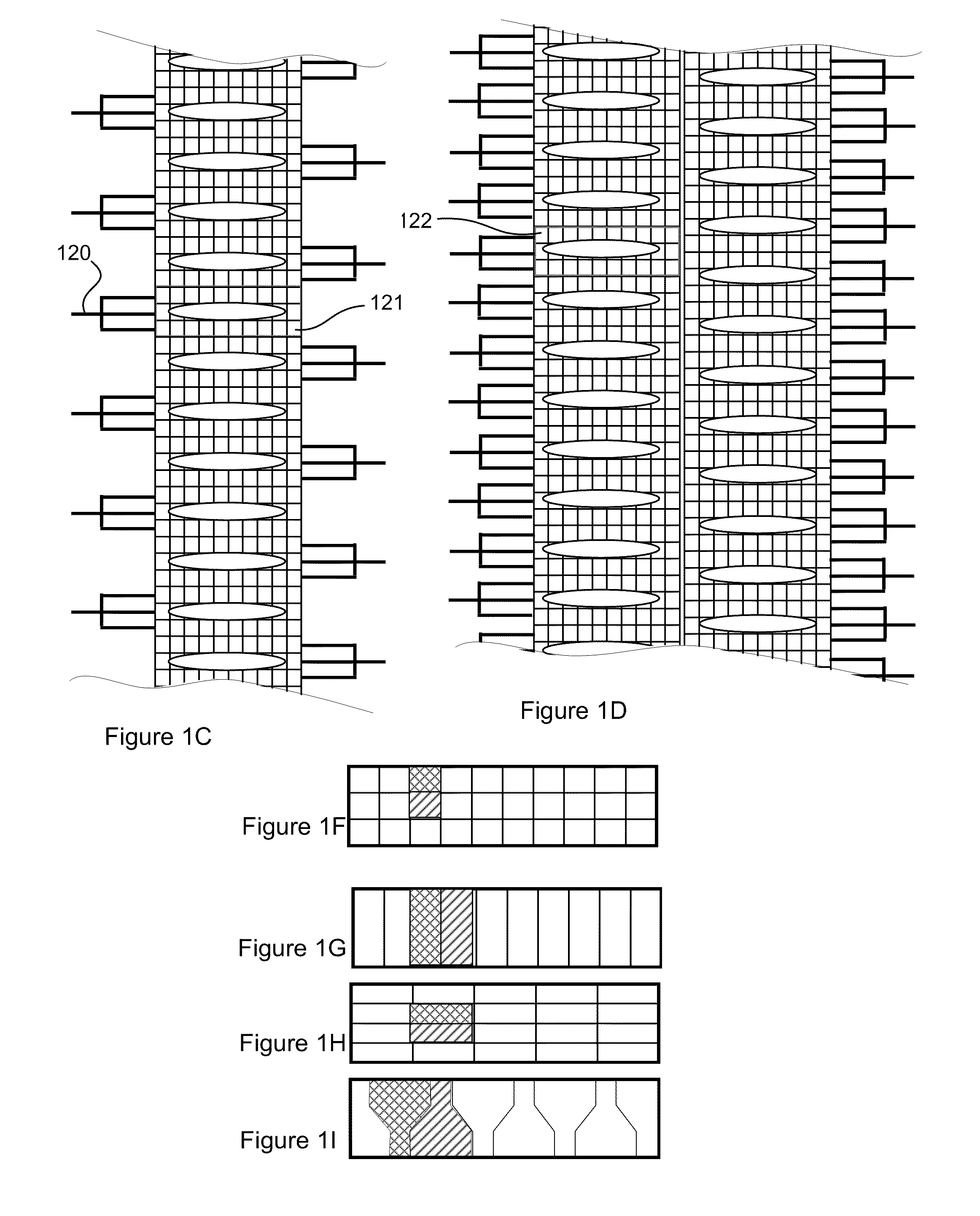Methods and Device for Laser Processing
a laser processing and laser technology, applied in the field of laser microlithography, can solve the problems of low throughput of dmd direct laser ablation, limited pulse power per mirror, and waste of most expensive materials that have been blanketed, and achieve the effect of facilitating laser ablation
- Summary
- Abstract
- Description
- Claims
- Application Information
AI Technical Summary
Benefits of technology
Problems solved by technology
Method used
Image
Examples
example embodiment
[0041]In one design, we propose using a laser with 50 W average power and 1 MHz repetition rate. The optical efficiency from laser to workpiece may be 50%. The SLM has 8192 pixels and the beam is split and focused to illuminate every third pixel. The unused pixels in between act as separation zones that keep the beamlets from interfering with one another. We have
81923=2730beams,
each with an effective footprint on the SLM of 10*1000 sq. μm, which is 0.01 sq. mm. The pulse energy per mirror is 25 w / 2730 / 1 MHz=10 nJ and the energy density is 100 μJ / sq. cm or 10,000 times too low for ablation. Therefore the mirrors are safe from the pulse energy. After demagnifying the image 40,000 times by area, i.e. making the each spot 0.5*0.5 μm sq., we arrive at 4 J / sq. cm, which is a reasonable ablation power. We now have 25 W energy ablating the workpiece and a pixel rate (number of beamlets times pulse frequency) of 2730*1,000,000=2.7 billion data pixels per second. At this rate, it is calculate...
PUM
| Property | Measurement | Unit |
|---|---|---|
| Time | aaaaa | aaaaa |
| Time | aaaaa | aaaaa |
| Time | aaaaa | aaaaa |
Abstract
Description
Claims
Application Information
 Login to View More
Login to View More - R&D
- Intellectual Property
- Life Sciences
- Materials
- Tech Scout
- Unparalleled Data Quality
- Higher Quality Content
- 60% Fewer Hallucinations
Browse by: Latest US Patents, China's latest patents, Technical Efficacy Thesaurus, Application Domain, Technology Topic, Popular Technical Reports.
© 2025 PatSnap. All rights reserved.Legal|Privacy policy|Modern Slavery Act Transparency Statement|Sitemap|About US| Contact US: help@patsnap.com



